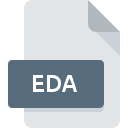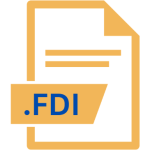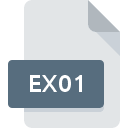.EDA File Extension

Ensoniq ASR Disk Image
| Developer | Ensoniq |
| Popularity | |
| Category | Disk Image Files |
| Format | .EDA |
| Cross Platform | Update Soon |
What is an EDA file?
An .EDA file, short for Ensoniq Disk Image, is a disk image file format used by the Ensoniq ASR series of samplers.
The ASR (Advanced Sampling Recorder) series, including models like the ASR-10 and ASR-88, was known for its advanced sampling capabilities and built-in digital effects.
The .EDA file format captures the entire contents of a floppy disk used with these samplers, preserving the exact data layout and structure.
More Information.
The initial purpose of the .EDA file format was to provide a method for storing and transferring the data from Ensoniq’s ASR samplers. In the pre-USB era, floppy disks were the primary medium for data storage and transfer.
The .EDA format encapsulated the disk’s entire content, including samples, settings, and user-defined parameters.
This was particularly useful for musicians who needed to back up their work or move their data between different ASR units.
As digital music production evolved, the use of floppy disks became obsolete, and new storage mediums emerged.
Despite this, the .EDA format remains a valuable artifact for users of vintage Ensoniq equipment, as it provides a means to preserve and access historical data.
Origin Of This File.
The Ensoniq ASR series was introduced in the late 1980s as part of Ensoniq’s efforts to deliver sophisticated sampling technology to musicians and producers. The .EDA file format originated as a way to back up and transfer the sampler’s data.
Ensoniq, a company that played a crucial role in the development of electronic musical instruments, designed the .EDA format to ensure that users could easily manage their sampled sounds and settings.
File Structure Technical Specification.
The .EDA file is essentially a binary disk image that replicates the entire content of a floppy disk. Here’s a breakdown of its technical specifications:
- Header Information: The .EDA file begins with a header that includes metadata about the disk image, such as the disk’s format and size.
- Data Blocks: Following the header, the file contains data blocks that represent the actual contents of the floppy disk. This includes sampled audio data, program settings, and other configurations.
- File System Layout: The .EDA file mirrors the file system structure of the original floppy disk, allowing software to interpret the data in the same way the ASR sampler would.
The file’s binary nature means it can only be read and interpreted by software that understands the Ensoniq ASR format.
How to Convert the File?
Converting .EDA files can be complex due to their specialized nature. There are a few approaches you can take:
- Ensoniq Software: If you still have access to Ensoniq hardware or software, you may be able to convert .EDA files to a more modern format using the original Ensoniq tools.
- Disk Image Tools: Specialized disk image tools and emulators designed for vintage Ensoniq hardware might offer conversion options. These tools can sometimes convert .EDA files into formats compatible with modern music software.
- Community Resources: Online forums and communities dedicated to vintage music equipment might have custom tools or scripts for converting .EDA files. Engaging with these communities can provide access to resources and expertise.
Advantages And Disadvantages.
Advantages:
- Data Preservation: .EDA files ensure that all the data from an Ensoniq ASR floppy disk is preserved in a single file, making it easier to back up and transfer.
- Historical Value: For enthusiasts and collectors of vintage musical equipment, .EDA files provide a way to access and utilize old data that might otherwise be lost.
Disadvantages:
- Obsolete Technology: As floppy disks have become obsolete, so too has the .EDA format. Finding hardware or software to interact with .EDA files can be challenging.
- Compatibility Issues: Modern operating systems and hardware do not natively support the .EDA format, necessitating the use of specialized tools or emulators.
How to Open EDA?
Open In Windows
- Emulators: Use an Ensoniq ASR emulator or a disk image utility that supports .EDA files. Some vintage music software might have Windows-compatible versions.
- Virtual Machines: Running a vintage OS in a virtual machine might also allow access to software that can read .EDA files.
Open In Linux
- Command-Line Tools: Linux users might be able to use command-line tools or scripts to interact with .EDA files. Check for open-source projects or community resources.
- Emulators: As with other OSes, finding an Ensoniq emulator that runs on Linux could provide a solution.
Open In MAC
- Emulators: Similar to Windows, use an Ensoniq ASR emulator for Mac. Some emulators might be available through open-source projects or vintage music software enthusiasts.
- Disk Image Utilities: Specialized disk image utilities that can handle .EDA files might be available for Mac users.













